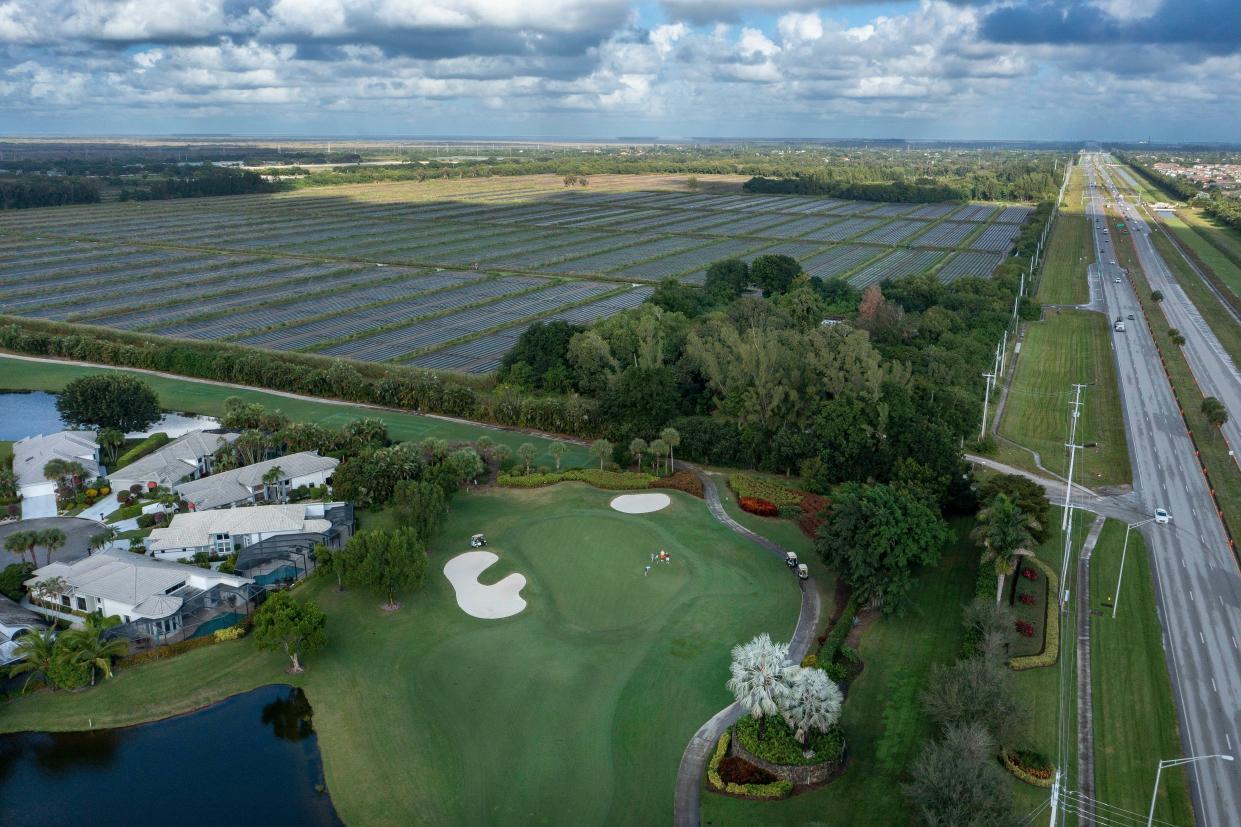Land use changes in Ag Reserve could help housing availability | Opinion

It is no secret that Palm Beach County faces a housing affordability crisis, and the easiest solution is to build more housing. However, given the dearth of developable land, rising construction costs, and restrictive zoning codes which limit how many and where housing can be built, few opportunities remain to produce meaningful new housing supply, particularly workforce housing. This article proposes an expansion and modification of the ‘Essential Housing’ land use category to stimulate the creation of thousands of new housing units in south Palm Beach County.
Last year, the county enacted a new land use designation, Essential Housing, to facilitate higher-density residential development in the Ag Reserve. The prior rules limited base density to just one unit per five acres. The new rules allow for up to eight units per acre for properties of at least 30 acres along Atlantic Avenue and Boynton Beach Boulevard. Development projects seeking the Essential Housing designation must provide at least 25% of the units as workforce housing and set aside 60% of the land as open space.
More on the Ag Reserve: Palm Beach County's Ag Reserve vote shows importance of growth management | Editorial
While certainly progress, Essential Housing won’t make a real dent in the housing crisis unless extended to all property owners in the Ag Reserve (i.e., no location, frontage, or minimum size requirements) and modified to increase the maximum density and reduce the open space requirement. By not clustering all the density on 40% of the land, the County could embrace traditional neighborhood development principles such as compact, interconnected and socially responsible communities with a variety of housing options (single-family, townhomes, cottages, and apartments) and usable open space that encourages interaction, all of which is sorely missing in the Ag Reserve and elsewhere in the County for that matter.
For mixed-use projects, a town center could be located within walking distance of homes. I think many people would find this a desirable departure from the hodge-podge development visible in the area today. It could also boost the much-needed “missing middle” housing stock.
As noted in a recent Washington Post article, "missing middle" refers to a kind of housing, including townhouses, duplexes and garden apartments, "that has been illegal or difficult to build in many neighborhoods because of zoning laws.”
More on the Ag Reserve: Save the Ag Reserve; vote down the GL Homes land swap | Opinion
Another, more controversial proposed departure from the current rules is to permit (1) Essential Housing on county-owned land in the Ag Reserve, and (2) the use and sale by the county of transferable development rights (TDRs) in the Ag Reserve. Currently, no residential development is permitted on county land in the Ag Reserve and private property owners in the Ag Reserve are not permitted to purchase development rights from the County’s TDR bank. Under my proposal, the County could monetize its land holdings and TDRs by leasing and/or selling them to private property owners for Essential Housing. I realize that County-owned land purchased as part of the 1999 bond issuance would need to be released from the bond restrictions and existing farm leases, but the reality is the primary motive for buying the land – to “preserve unique farmland” and prevent overdevelopment – is questionable at best and the wrong public policy decision today, respectively. In fact, farmers have argued (successfully) that farming no longer works in the Ag Reserve to support development proposals on land they owned and wanted to sell to developers. And the aggressive development the county sought to avoid is precisely now what the county needs to solve the housing crisis.
The above proposal could be the most impactful housing initiative in county history and would not cost the county a penny. To the contrary, the County would collect substantial real estate taxes in perpetuity and monetize its property holdings and TDR bank which would more than offset the additional infrastructure and services required to support the new development. Builders like us would line up at the door to participate in projects like this, but more importantly, prospective residents would line up to live there. The demand is insatiable. The time is now.
Palm Beach County has a housing crisis that cannot be solved without prioritizing housing over farming and working with the development community to facilitate the construction of tens of thousands of new housing units. By expanding and modifying the Essential Housing land use category as described herein, the county could make significant headway in achieving this goal. I am not aware of another viable plan or desirable location outside the Ag Reserve to do so.
Matt Ellish is president of Ellish Builders, based in Boca Raton, Florida. Matt lives in the Ag Reserve.
This article originally appeared on Palm Beach Post: Ways to use Ag Reserve to fix housing shortage

